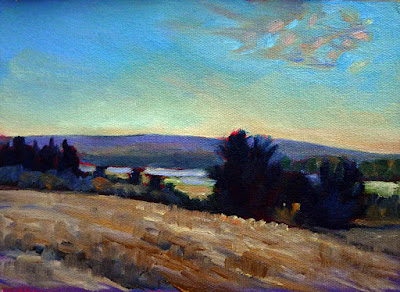In science or art, it’s always better to describe what you see, rather than what you think you know.
 |
| Figure painting by Carol L. Douglas |
Somatotypingwas developed in the 1940s by psychologist William Sheldon. He sorted the human physique into three ‘somatotypes’:
- Ectomorphs are tall, skinny, weak, and have low testosterone levels.
- Mesomorphs are naturally hard and strong, with even weight distribution, muscular with weight training, thick-skinned, and have good posture with a narrow waist.
- Endomorphs are fat, short and have trouble losing weight.
Sheldon didn’t stop there. He then concluded that:
- Ectomorphs are intelligent, gentle and calm, but self-conscious, introverted and anxious.
- Mesomorphs are competitive, extroverted, and tough.
- Endomorphs are outgoing, friendly, happy and laid-back, but also lazy and selfish.
 |
| Figure painting by Carol L. Douglas |
Somatotyping is now rightly dismissed as quackery verging on eugenics. But it did have an impact on policy worldwide, and is still in use today, in the variant called the Heath-Carter formula for measuring total body shape.
I can’t help but think his description of endomorphs was targeted at the millions of southern European immigrants who came to the US in the late 19th and early 20th century. They tended to be short and round. They didn’t match the northern European phenotype of long bones and narrow skulls.
 |
| Figure painting by Carol L. Douglas |
Sheldon’s ideas were less of a theory than an assumption: that you can see a relationship between structure and behavior. We deny it, but we still think that way today. Yesterday, I watched a Labrador retriever wallow in a puddle. His owner proudly remarked that it was classic Lab behavior.
In fact, the greatest swimming dog I ever had was a Jack Russell terrier. Meanwhile, my friend Mary kept standard Poodles who hated water. Dogs have been closely bred for behavioral traits since they were first domesticated around 20,000 years ago. Yet they’re continuously acting outside the bounds of their so-called breed characteristics.
Never is this truer than with the humble apple. You can’t get it to breed to type. There are between 7,500 and 10,000 apple cultivars worldwide, depending on who’s counting. But apples must be propagated asexually, via grafting. Apples are extreme heterozygotes. Seedlings don’t run true to their parents. You might see a beautiful apple tree in the wild, take a bite of its lovely fruit and—blech! It’s mealy and indigestible.
| Figure painting by Carol L. Douglas |
In figure drawing, we use a variation of somatatyping when we idealize measurements. We sometimes teach that:
- The average person is generally seven-and-a-half heads tall.
- An ideal figure is eight heads tall.
- An heroic figure is eight-and-a-half heads tall.
Those figures are based on the Nordic model, and they’re no more accurate than Sheldon’s somatotypes. It pays to paint what you see, not what you ‘know’.




























